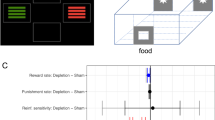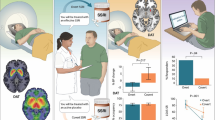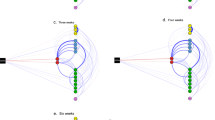Abstract
Whereas several well-controlled studies have established the selective serotonin reuptake inhibitors (SSRIs) as the recommended first-line pharmacotherapeutic agents for acute and chronic post-traumatic stress disorder (PTSD), drug interventions in the acute postexposure phase have not been studied to the same extent and tend to be largely speculative. This study employed an animal model which assesses prevalence of individual stress–response behavior patterns in order to assess the short-term effects of a brief treatment regimen with an SSRI (sertraline) administered immediately after stress–exposure, with those of an identical delayed regimen and of saline. Prevalence rates of rats displaying extreme anxiety-like behavioral responses to predator stress, compared to partial and minimal responses, were assessed in the elevated plus maze and startle response paradigms, with and without intraperitoneal administration of sertraline for 7 days immediately postexposure, or 7 days after exposure. Immediate postexposure administration of sertraline reduced anxiety-like and avoidant behavior, decreased hyperarousal responses and diminished the overall incidence of extreme (PTSD-like) behavioral responses, compared to the delayed treatment regimen and to saline controls. Brief immediate poststress exposure treatment with sertraline reduced prevalence rates of extreme behavioral disruption in the short-term. SSRI drugs are thus worthy of further investigation as agents of secondary prevention in the acute aftermath of stress–exposure.
Similar content being viewed by others
Log in or create a free account to read this content
Gain free access to this article, as well as selected content from this journal and more on nature.com
or
References
Adamec R (1997). Transmitter systems involved in neural plasticity underlying increased anxiety and defense—implications for understanding anxiety following traumatic stress. Neurosci Biobehav Rev 21: 755–765.
Adamec RE, Blundell J, Burton P (2003). Phosphorylated cyclic AMP response element binding protein expression induced in the periaqueductal gray by predator stress: its relationship to the stress experience, behavior and limbic neural plasticity. Prog Neuropsychopharmacol Biol Psychiatry 27: 1243–1267.
Adamec RE, Shallow T (1993). Lasting effects on rodent anxiety of a single exposure to a cat. Physiol Behav 54: 101–109.
Asnis GM, Kohn SR, Henderson M, Brown NL (2004). SSRIs versus non-SSRIs in post-traumatic stress disorder: an update with recommendations. Drugs 64: 383–404.
Bramham CR, Messaoudi E (2005). BDNF function in adult synaptic plasticity: the synaptic consolidation hypothesis. Prog Neurobiol 76: 99–125.
Bryant RA (2005). Predicting posttraumatic stress disorder from acute reactions. J Trauma Dissociation 6: 5–15.
Cohen H, Joseph Z, Matar M (2003). The Relevance of differential response to trauma in an animal model of post-traumatic stress disorder. Biol Psychiatry 53: 463–473.
Cohen H, Kaplan Z, Matar A, Loewenthal U, Kozlovsky N, Zohar J (2006a). Anisomycin, a protein synthesis inhibitor, disrupts traumatic memory consolidation and attenuates post traumatic stress response in rats. Biolo Psychiatry (in press).
Cohen H, Zohar J (2004). Animal models of post traumatic stress disorder: the use of cut off behavioral criteria. Ann NY Acad Sci 1032: 167–178.
Cohen H, Zohar J, Gidron Y, Matar M, Belkind D, Loewenthal U et al (2006b). Blunted HPA axis response to stress influences susceptibility to posttraumatic stress response in rats. Biol Psychiatry (in press).
Cohen H, Zohar J, Matar MA, Kaplan Z, Geva AB (2005). Unsupervised Fuzzy Clustering Analysis Supports Behavioral Cutoff Criteria in an Animal Model of Posttraumatic Stress Disorder. Biol Psychiatry 58: 640–651.
Cohen H, Zohar J, Matar MA, Zeev K, Loewenthal U, Richter-Levin G (2004). Setting apart the affected: the use of behavioral criteria in animal models of post traumatic stress disorder. Neuropsychopharmacology 29: 1962–1970.
Cryan JF, O'Leary OF, Jin SH, Friedland JC, Ouyang M, Hirsch BR et al (2004). Norepinephrine-deficient mice lack responses to antidepressant drugs, including selective serotonin reuptake inhibitors. Proc Natl Acad Sci USA 101: 8186–8191; E-pub 2004 May 17.
Davidson JR (2003). Treatment of posttraumatic stress disorder: the impact of paroxetine. Psychopharmacol Bull 37: 76–88.
Davidson JR (2004a). Remission in post-traumatic stress disorder (PTSD): effects of sertraline as assessed by the Davidson Trauma Scale, Clinical Global Impressions and the Clinician-Administered PTSD scale. Int Clin Psychopharmacol 19: 85–87.
Davidson JR (2004b). Use of benzodiazepines in social anxiety disorder, generalized anxiety disorder, and posttraumatic stress disorder. J Clin Psychiatry 65: 29–33.
Duman RS (1998). Novel therapeutic approaches beyond the serotonin receptor. Biol Psychiatry 44: 324–335.
Duman RS, Heninger GR, Nestler EJ (1997). A molecular and cellular theory of depression. Arch Gen Psychiatry 54: 597–606.
Duman RS, Malberg J, Nakagawa S, D'Sa C (2000). Neuronal plasticity and survival in mood disorders. Biol Psychiatry 48: 732–739.
Ehlers A, Clark D (2003). Early psychological interventions for adult survivors of trauma: a review. Biol Psychiatry 53: 817–826.
File SE (1993). The interplay of learning and anxiety in the elevated plus-maze. Behav Brain Res 58: 199–202.
Foa EB, Cahill SP, Boscarino JA, Hobfoll SE, Lahad M, McNally RJ et al (2005). Social, psychological, and psychiatric interventions following terrorist attacks: recommendations for practice and research. Neuropsychopharmacology 30: 1806–1817.
Gelpin E, Bonne O, Peri T, Brandes D, Shalev AY (1996). Treatment of recent trauma survivors with benzodiazepines: a prospective study. J Clin Psychiatry 57: 390–394.
Hyman C, Hofer M, Barde YA, Juhasz M, Yancopoulos GD, Squinto SP et al (1991). BDNF is a neurotrophic factor for dopaminergic neurons of the substantia nigra. Nature 350: 230–232.
Kim SW, Park SY, Hwang O (2002). Up-regulation of tryptophan hydroxylase expression and serotonin synthesis by sertraline. Mol Pharmacol 61: 778–785.
Lee JL, Everitt BJ, Thomas KL (2004). Independent cellular processes for hippocampal memory consolidation and reconsolidation. Science 304: 839–843; E-pub 2004 April 8.
Maisonpierre PC, Le Beau MM, Espinosa 3rd R, Ip NY, Belluscio L, de la Monte SM et al (1991). Human and rat brain-derived neurotrophic factor and neurotrophin-3: gene structures, distributions, and chromosomal localizations. Genomics 10: 558–568.
Maj J, Rogoz Z (1999). Synergistic effect of pramipexole and sertraline in the forced swimming test. Pol J Pharmacol 51: 471–475.
Manji HK, Duman RS (2001). Impairments of neuroplasticity and cellular resilience in severe mood disorders: implications for the development of novel therapeutics. Psychopharmacol Bull 35: 5–49.
Marona-Lewicka D, Nichols DE (1997). The effect of selective serotonin releasing agents in the chronic mild stress model of depression in rats. Stress 2: 91–100.
Mattson MP, Maudsley S, Martin B (2004). BDNF and 5-HT: a dynamic duo in age-related neuronal plasticity and neurodegenerative disorders. Trends Neurosci 27: 589–594.
Nemeroff CB, Bremner JD, Foa EB, Mayberg HS, North CS, Stein MB (2006). Posttraumatic stress disorder: a state-of-the-science review. J Psychiatr Res 40: 1–21; E-pub 2005 October 18.
Nemeroff CB, Owens MJ (2004). Pharmacologic differences among the SSRIs: focus on monoamine transporters and the HPA axis. CNS Spectr 9: 23–31.
Nibuya M, Morinobu S, Duman RS (1995). Regulation of BDNF and trkB mRNA in rat brain by chronic electroconvulsive seizure and antidepressant drug treatments. J Neurosci 15: 7539–7547.
Owens MJ, Knight DL, Nemeroff CB (2000). Paroxetine binding to the rat norepinephrine transporter in vivo. Biol Psychiatry 47: 842–845.
Pitman RK, Delahanty DL (2005). Conceptually driven pharmacologic approaches to acute trauma. CNS Spectr 10: 99–106.
Pitman RK, Sanders KM, Zusman RM, Healy AR, Cheema F, Lasko NB et al (2002). Pilot study of secondary prevention of posttraumatic stress disorder with propranolol. Biol Psychiatry 51: 189–192.
Sansone RA, Hruschka J, Vasudevan A, Miller SN (2003). Benzodiazepine exposure and history of trauma. Psychosomatics 44: 523–524.
Santarelli L, Saxe M, Gross C, Surget A, Battaglia F, Dulawa S et al (2003). Requirement of hippocampal neurogenesis for the behavioral effects of antidepressants. Science 301: 805–809.
Semkova I, Wolz P, Krieglstein J (1998). Neuroprotective effect of 5-HT1A receptor agonist, Bay X 3702, demonstrated in vitro and in vivo. Eur J Pharmacol 359: 251–260.
Shalev AY (2002). Acute stress reactions in adults. Biol Psychiatry 51: 532–543.
Smith MA, Makino S, Kvetnansky R, Post RM (1995). Stress and glucocorticoids affect the expression of brain-derived neurotrophic factor and neurotrophin-3 mRNAs in the hippocampus. J Neurosci 15: 1768–1777.
Stein DJ, Bandelow B, Hollander E, Nutt DJ, Okasha A, Pollack MH et al (2003). WCA Recommendations for the long-term treatment of posttraumatic stress disorder. CNS Spectr 8: 31–39.
Thomas DN, Nutt DJ, Holman RB (1998). Sertraline, a selective serotonin reuptake inhibitor modulates extracellular noradrenaline in the rat frontal cortex. J Psychopharmacol 12: 366–370.
Tucker P, Ruwe WD, Masters B, Parker DE, Hossain A, Trautman RP et al (2004). Neuroimmune and cortisol changes in selective serotonin reuptake inhibitor and placebo treatment of chronic posttraumatic stress disorder. Biol Psychiatry 56: 121–128.
Ursano RJ, Bell C, Eth S, Friedman M, Norwood A, Pfefferbaum B et al (2004). Practice guideline for the treatment of patients with acute stress disorder and posttraumatic stress disorder. Am J Psychiatry 161: 3–31.
Weine S, Danieli Y, Silove D, Van Ommeren M, Fairbank JA, Saul J (2002). Guidelines for international training in mental health and psychosocial interventions for trauma exposed populations in clinical and community settings. Psychiatry 65: 156–164.
Zohar J, Amital D, Miodownik C, Kotler M, Bleich A, Lane RM et al (2002). Double-blind placebo-controlled pilot study of sertraline in military veterans with posttraumatic stress disorder. J Clin Psychopharmacol 22: 190–195.
Acknowledgements
This study was made possible by a research grant to ZJ and CH from Pfizer Research Department New York, USA.
Author information
Authors and Affiliations
Corresponding author
Rights and permissions
About this article
Cite this article
Matar, M., Cohen, H., Kaplan, Z. et al. The Effect of Early Poststressor Intervention with Sertraline on Behavioral Responses in an Animal Model of Post-Traumatic Stress Disorder. Neuropsychopharmacol 31, 2610–2618 (2006). https://doi.org/10.1038/sj.npp.1301132
Received:
Revised:
Accepted:
Published:
Issue date:
DOI: https://doi.org/10.1038/sj.npp.1301132
Keywords
This article is cited by
-
Rodent models of post-traumatic stress disorder: behavioral assessment
Translational Psychiatry (2020)
-
Evaluation of the Effect of Prazosin Treatment on α-2c Adrenoceptor and Apoptosis Protein Levels in the Predator Scent-Induced Rat Model of Post-Traumatic Stress Disorder
Journal of Molecular Neuroscience (2020)
-
An Evidence-Based Review of Early Intervention and Prevention of Posttraumatic Stress Disorder
Community Mental Health Journal (2017)
-
Escitalopram in the prevention of posttraumatic stress disorder: a pilot randomized controlled trial
BMC Psychiatry (2015)
-
Cannabinoids Prevent the Effects of a Footshock Followed by Situational Reminders on Emotional Processing
Neuropsychopharmacology (2014)



